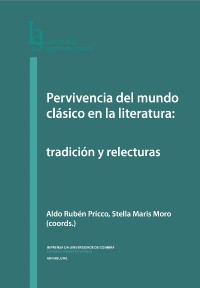Please use this identifier to cite or link to this item:
https://hdl.handle.net/10316.2/90305| Title: | El mito de Orfeo en el teatro argentino contemporáneo: la casa sin sosiego de Griselda Gambaro | Other Titles: | The myth of Orpheus in contemporary Argentine theatre: la casa sin sosiego by Griselda Gambaro | Authors: | Galan, Lía | Keywords: | Gambaro;Orpheus;myth;opera;Gambaro;Orfeo;mito;ópera | Issue Date: | 2017 | Publisher: | Imprensa da Universidade de Coimbra | Journal: | http://hdl.handle.net/10316.2/42874 | Abstract: | La casa sin sosiego (The house without calm), written by G. Gambaro in 1991, is a scenic drama for chamber opera, with music by Gerardo Gandini, created by request of the Instituto Torcuato Di Tella Foundation and produced by the Center for Experimentation in Opera and Ballet of the Teatro Colon in Buenos Aires. La casa sin sosiego is a remaking of the myth of Orpheus in the context of the Argentine post-dictatorship and the search for missing persons during the military government in
Argentina (1976-1983). It shows varied intertextual relations that refer, implicitly, to Ovid (Metamorphoses, 10. 1-85) and Virgilio (Georgics 4. 454-550), and explicitly, to La Favola d’Orfeo (Monteverdi’s opera), which appears as a leit-motive of the play, and the sonnet IX of Sonnets to Orpheus of Rilke. In Gambaro’s play, Juan, the new Orpheus, is looking for his wife Teresa (Eurydice), who is among the dead (persons). The anguish
of loss leads him to the brief meeting with his wife in hell, from where he comes out with the painful certainty of the unrecoverable woman. Written years after the events, the piece is a subtle Gambaro’s call to the memory of a past that must not be repeated. La casa sin sosiego, escrita por G. Gambaro en 1991, es un drama escénico para ópera de cámara con música de Gerardo Gandini, creado por pedido de la Fundación Instituto Torcuato Di Tella y producido por el Centro de Experimentación en Ópera y Ballet del Teatro Colón de Buenos Aires. La casa sin sosiego es una reelaboración del mito de Orfeo en el contexto de la post-dictadura argentina y la búsqueda de personas desaparecidas durante el gobierno militar en Argentina (1976-1983). Muestra las relaciones intertextuales variadas que hacen referencia, de manera implícita, a Ovidio (Metamorfosis, 10. 1-85) y Virgilio (Geórgicas 4. 454-550) y, explícitamente, a La Favola d'Orfeo (ópera de Monteverdi), que aparece como un leit-motive de la obra, y el soneto IX de Sonetos a Orfeo de Rilke. En la obra de Gambaro, Juan, el nuevo Orfeo, está en busca de su esposa Teresa (Eurídice), que se encuentra entre los muertos. La angustia de la pérdida le lleva a la breve reunión con su esposa en el Infierno, y de él sale con la dolorosa certeza de la mujer irrecuperable. Escrita años después de los acontecimientos, la pieza es una sutil llamada a la memoria de un pasado que no debe repetirse. |
URI: | https://hdl.handle.net/10316.2/90305 | ISBN: | 978‑989‑26‑1438‑0 978‑989‑26‑1439‑7 (PDF) |
ISSN: | ISSN:2182‑8814 | DOI: | 10.14195/978-989-26-1439-7_23 | Rights: | open access |
| Appears in Collections: | Pervivencia del mundo clásico en la literatura: tradición y relecturas |
Files in This Item:
| File | Description | Size | Format | |
|---|---|---|---|---|
| el_mito_de_orfeo_en_el_teatro_argentino_contemporaneo.pdf | 564.73 kB | Adobe PDF |  |
Items in DSpace are protected by copyright, with all rights reserved, unless otherwise indicated.
